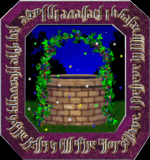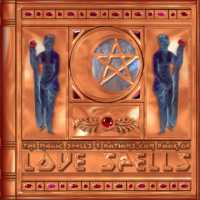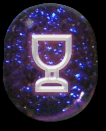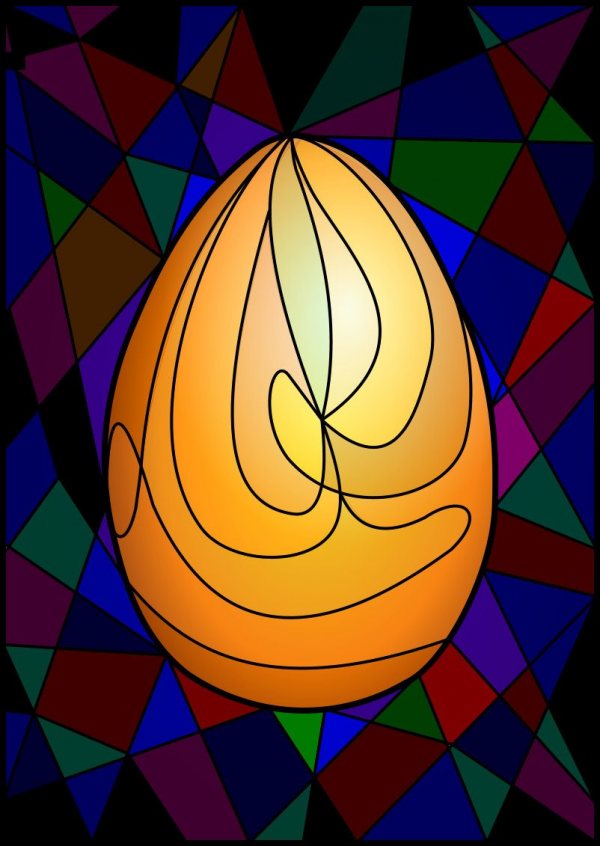St John's Wort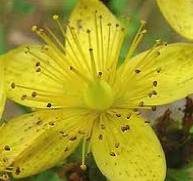
The name Hypericum is derived from the two Greek words, huper eikon, "over an apparition," because of its supposed power to exorcise evil spirits, or influences; whence it was also formerly called Fuga doemoniorum, "the Devil's Scourge," "the Grace of God," "the Lord God's Wonder Plant." and some other names of a like import, probably too, because found to be of curative use against insanity.
Added Dec 3, 2010
| 9,494 Reads
The wild Saint John's Wort (Hypericum peiforatum) is a frequent plant in our woods and hedgebanks, having leaves studded with minute translucent vesicles, which seem to perforate their structure, and which contain a terebinthinate oil of fragrant medicinal virtues. The name Hypericum is derived from the two Greek words, huper eikon, "over an apparition," because of its supposed power to exorcise evil spirits, or influences; whence it was also formerly called Fuga doemoniorum, "the Devil's Scourge," "the Grace of God," "the Lord God's Wonder Plant." and some other names of a like import, probably too, because found to be of curative use against insanity. Again, it used to be entitled Hexenkraut, and "Witch's Herb," on account of its reputed magical powers. Matthiolus said, Scripsere quidam Hypericum adeo odisse doemones, ut ejus suffitu statim avolent, "Certain writers have said that the St. John's Wort is so detested by evil spirits that they fly off at a whiff of its odour." Further names of the herb are "Amber," "Hundred Holes," and Sol terrestris, the "Terrestrial Sun," because it was believed that all the spirits of darkness vanish in its presence, as at the rising of the sun. For children troubled with incontinence of urine at night, and who wet their beds, an infusion, or tea, of the St. John's Wort is an admirable preventive medicine, which will stop this untoward infirmity. The title St. John's Wort is given, either because the plant blossoms about St. John's day, June 24th, or because the red-coloured sap which it furnishes was thought to resemble and signalise the blood of St. John the Baptist. Ancient writers certainly attributed a host of virtues to this plant, especially for the cure of hypochondriasis, and insanity. The red juice, or "red oil," of Hypericum made effective by hanging for some months in a glass vessel exposed to the sun, is esteemed as one of the most popular and curative applications in Europe for excoriations, wounds, and bruises. The flowers also when rubbed together between the fingers yield a red juice, so that the plant has obtained the title of Sanguis hominis, human blood. Furthermore, this herb is Medicamentum in mansâ intus sumptum, "to be chewed for its curative effects." And for making a medicinal infusion, an ounce of the herb should be used to a pint of boiling water. This may be given beneficially for chronic catarrhs of the lungs, the bowels, or the urinary passages, Dr. Tuthill Massy considered the St. John's Wort, by virtue of its healing properties for injuries of the spinal cord, and its dependencies, the vulnerary "arnica" of the organic nervous system. On the doctrine of signatures, because of its perforated leaves, and because of the blood-red juice contained in the capsules which it bears, this plant was formerly deemed a most excellent specific for healing wounds, and for stopping a flow of blood:— "Hypericon was there—the herb of war, For lacerated nerves, and injuries by violence to the spinal cord, a warm lotion should be employed, made with one part of the tincture to twenty parts of water, comfortably hot. A salve compounded from the flowers, and known as St. John's Wort Salve, is still much used and valued in English villages. And in several countries the dew which has fallen on vegetation before daybreak on St. John's morning, is gathered with great care. It is thought to protect the eyes from all harm throughout the ensuing year, and the Venetians say it renews the roots of the hair on the baldest of heads. Peasants in the Isle of Man, are wont to think that if anyone treads on the St. John's Wort after sunset, a fairy horse will arise from the earth, and will carry him about all night, leaving him at sunrise wherever he may chance to be. The plant has a somewhat aromatic odour; and from the leaves and flowers, when crushed, a lemon-like scent is exhaled, whilst their taste is bitter and astringent. The flowers furnish for fabrics of silk or wool a dye of deep yellow. Those parts of the plant were alone ordered by the London Pharmacopoeia to be used for supplying in chief the medicinal, oily, resinous extractive of the plant. The juice gives a red colour to the spirit of wine with which it is mixed, and to expressed oils, being then known as the Hypericum "red oil" mentioned above. The flowers contain tannin, and "Hypericum red." Moreover, this Hypericum oil made from the tops is highly useful for healing bed sores, and is commended as excellent for ulcers. A medicinal tincture is prepared with spirit of wine from the entire fresh plant, collected when flowering, or in seed, and this proves of capital service for remedying injuries to the spinal cord, both by being given internally, and by its external use. It has been employed in like manner with benefit for lock-jaw. The dose of the tincture is from five to eight drops with a spoonful of water two or three times a day. This plant may be readily distinguished from others of the Hypericaceous order by its decidedly two edged stem. Sprigs of it are stuck at the present time in Wales over every outer door on the eve of St. John's day; and in Scotland, milking is done on the herb to dispel the malignant enchantments which cause ropy milk. Among the Christian saints St. John represents light; and the flowers of this plant were taken as a reminder of the beneficent sun. Tutsan is a large flowered variety (Hypericum androsoemum) of the St. John's Wort, named from the French toute saine, or "heal all," because of its many curative virtues; and is common in Devon and Cornwall. It possesses the same properties as the perforate sort, but yields a stronger and more camphoraceous odour when the flowers and the seed vessels are bruised. A tincture made from this plant, as well as that made from the perforate St. John's Wort, has been used with success to cure melancholia, and its allied forms of insanity. The seed-capsules of the Tutsan are glossy and berry-like; the leaves retain their strong resinous odour after being dried. Tutsan is called also provincially "Woman's Tongue," once set g(r)owing it never stops; and by country folk in Ireland the "Rose of Sharon." Its botanical name Androsoemum, andros aima, man's blood, derived from the red juice and oil, probably suggested the popular title of Tutsan, "heal all," often corrupted to "Touchen leaf." Gerard gives a receipt, as a great secret, for making a compound oil of Hypericum, "than which," he says, "I know that in the world there is no better; no, not the natural balsam itself." "The plant," he adds, "is a singular remedy for the sciatica, provided that the patient drink water for a day or two after purging." "The leaves laid upon broken shins and scabbed legs do heal them." The whole plant is of a special value for healing punctured wounds; and its leaves are diuretic. It is handsome and shrubby, growing to a height of two or three feet.
Added Dec 3, 2010
| 9,494 Reads
Share The Magic ...
The GoE MONEY!!! Course - A Course In Real MONEY MAGIC!
|

